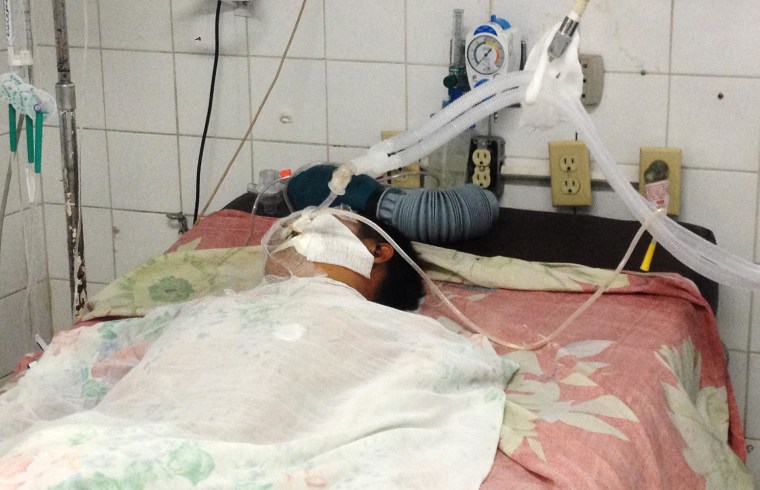In a crowded, run-down emergency room in San Pedro Sula, the reason why so many children are fleeing Honduras for the dangerous trek to the U.S. is easy to find.
A 17-year-old boy lies in a coma on a gurney. He has been shot in the head — yet another victim of the unrelenting violence that has turned this Central American country into the murder capital of the world.
A pediatrician who works in the Hospital Nacional emergency room says he's had to become an expert at repairing the damage bullets do to children.
In the last five years, the number of kids coming through the doors who are victims of violence has tripled. On a busy night, Dr. David Mendoza might treat six or seven kids who have fallen victim to Honduras' crime epidemic.
"We see younger kids affected by violence — 12, 13, 14 years old," he said.
This report is part of a multi-part look at the border crisis, "Desperate Journey: Children at America's Border." Check back for more on NBCNews.com and Nightly News With Brian Williams later this week.
It's not difficult to figure out which youths have been targeted by gangs, like the teenager who was brought in last week with 17 shots in his abdomen and somehow survived.
Others, like a baby girl with a head wound, are collateral damage in the ruthless street wars waged by gangs, who are active in nearly half the country.
"To survive in some communities, you have to be part of a gang," Mendoza said.
Honduras' homicide rate was 90 slayings per 100,000 people in 2012, the worst in the world and six times the global average. The U.S. State Department warns that a corrupt and toothless police force means "criminals operate with a high-degree of impunity throughout Honduras."
Crushing poverty underlies the violence. Nearly two-thirds of the population lives below the poverty line, according to UNICEF. One in three infants is malnourished, and children in rural areas get an average of four years of schooling.
For many families, the only escape is over the porous border with Guatemala. There are only 22 police officers — with a single vehicle at their disposal — to patrol 43 miles of the border, which they say is full of "blind spots."
The children are hustled over the line and then into Mexico, and finally to the U.S., which has been struggling to cope with the surge in unaccompanied minors since October.

The 1,000-mile journey is physically punishing and full of peril. The coyotes who collect fat fees to smuggle the children to their final destination can pocket the money and abandon their human cargo. The children can be assaulted, trafficked or simply injured on the rough terrain.
At the hospital, Dr. Mendoza said he realizes why many Hondurans accept the risk.
"It's very sad because this is a beautiful country. My youth was beautiful. We played on the streets. We walked on the streets at night, and now these kids can't do that," he said.
"And I think it is us, the adults, that have failed these kids. We have permitted, one way or another, for violence to grow."